Alt + F File menu options in current program
Alt + E Edit options in current program
F1 Universal help (for all programs)
Ctrl + A Select all text
Ctrl + X Cut selected item
Shift + Del Cut selected item
Ctrl + C Copy selected item
Ctrl + Ins Copy selected item
Ctrl + V Paste
Shift + Ins Paste
Home Go to beginning of current line
Ctrl + Home Go to beginning of document
End Go to end of current line
Ctrl + End Go to end of document
Shift + Home Highlight from current position to beginning of
line
Shift + End Highlight from current position to end of line
Ctrl + F Move one word to the left at a time
Ctrl + G Move one word to the right at a time
CLICK ME FOR READ MORE >>>

























 BeOS was originally developed by the company Be with the former Apple coworker Jean-Louis Gasseè for its own type of computer, the BeBox. It contains 2 power PC CPUs and was equipped with maximally with 256 Mbyte of RAM. BeOS is written from sratch and does not contain obsolete operating system design concepts. Designed as a single user operating system BeOS unfolds his optimal efficiency on multi-processor systems with several parallel running programs through it modern multi-thread based structure. BeOS basically does not run other applications that are not developed for this operating system. This operating system is only available in English, French and Japanese languages.
BeOS was originally developed by the company Be with the former Apple coworker Jean-Louis Gasseè for its own type of computer, the BeBox. It contains 2 power PC CPUs and was equipped with maximally with 256 Mbyte of RAM. BeOS is written from sratch and does not contain obsolete operating system design concepts. Designed as a single user operating system BeOS unfolds his optimal efficiency on multi-processor systems with several parallel running programs through it modern multi-thread based structure. BeOS basically does not run other applications that are not developed for this operating system. This operating system is only available in English, French and Japanese languages. 
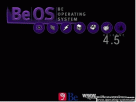
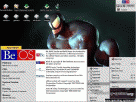
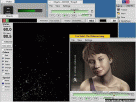
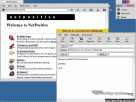
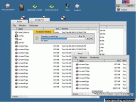
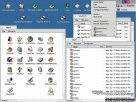
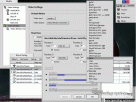
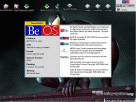


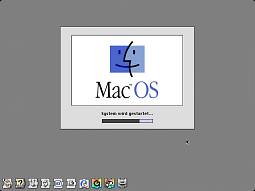
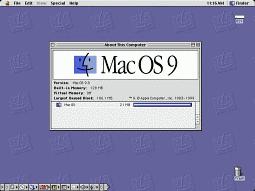
 Different technologies like the Mach Kernel, NEXTSTEP and tools from NetBSD and FreeBSD found influence in Mac OS X to merge the previous Apple technology with UNIX features. The operating system core Darwin is open source and can be used also on x86 computers standalone. Mac OS X works with preemptive multi-tasking and includes beside the new GUI Aqua the classic GUI from Mac OS 9.
Different technologies like the Mach Kernel, NEXTSTEP and tools from NetBSD and FreeBSD found influence in Mac OS X to merge the previous Apple technology with UNIX features. The operating system core Darwin is open source and can be used also on x86 computers standalone. Mac OS X works with preemptive multi-tasking and includes beside the new GUI Aqua the classic GUI from Mac OS 9. 











